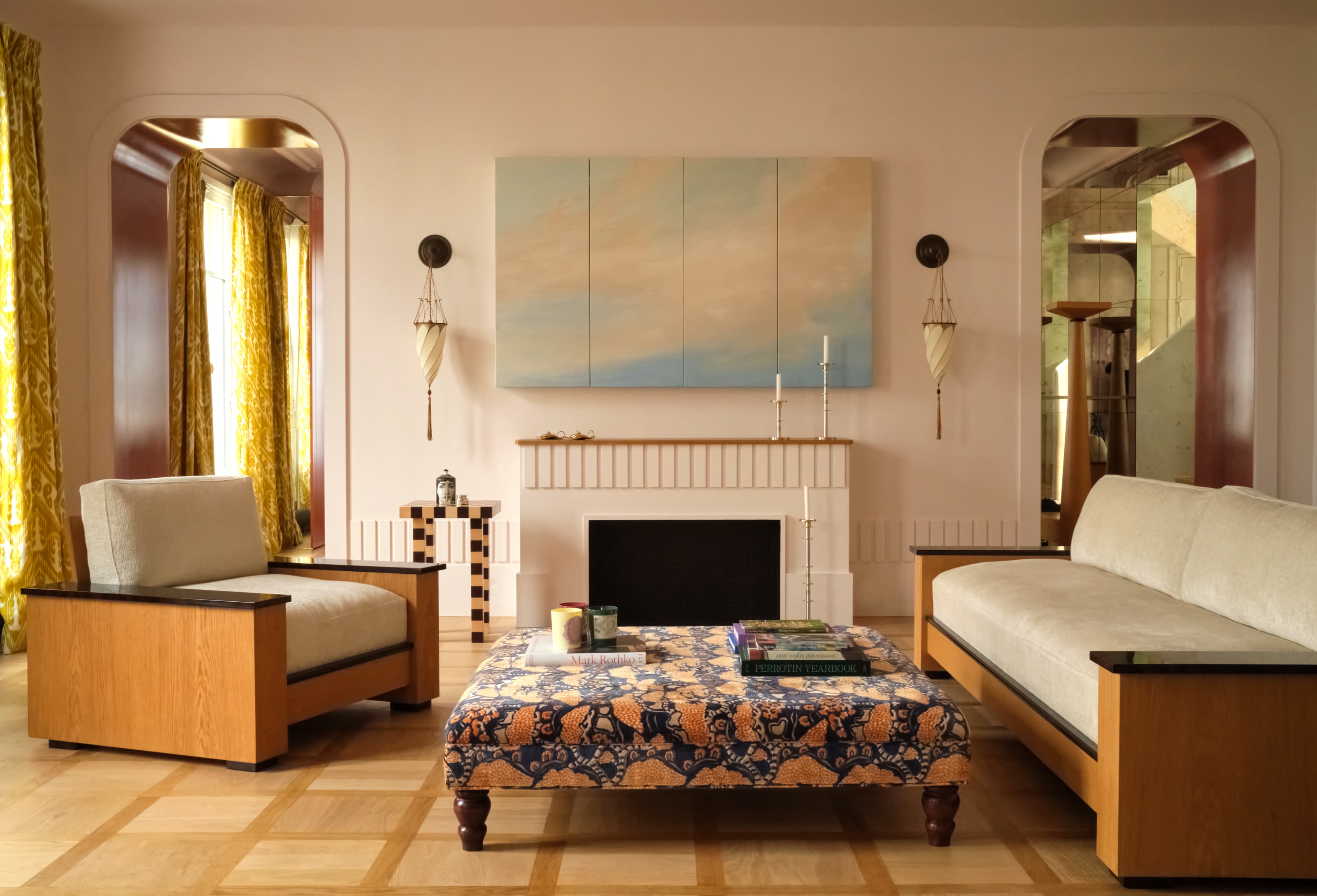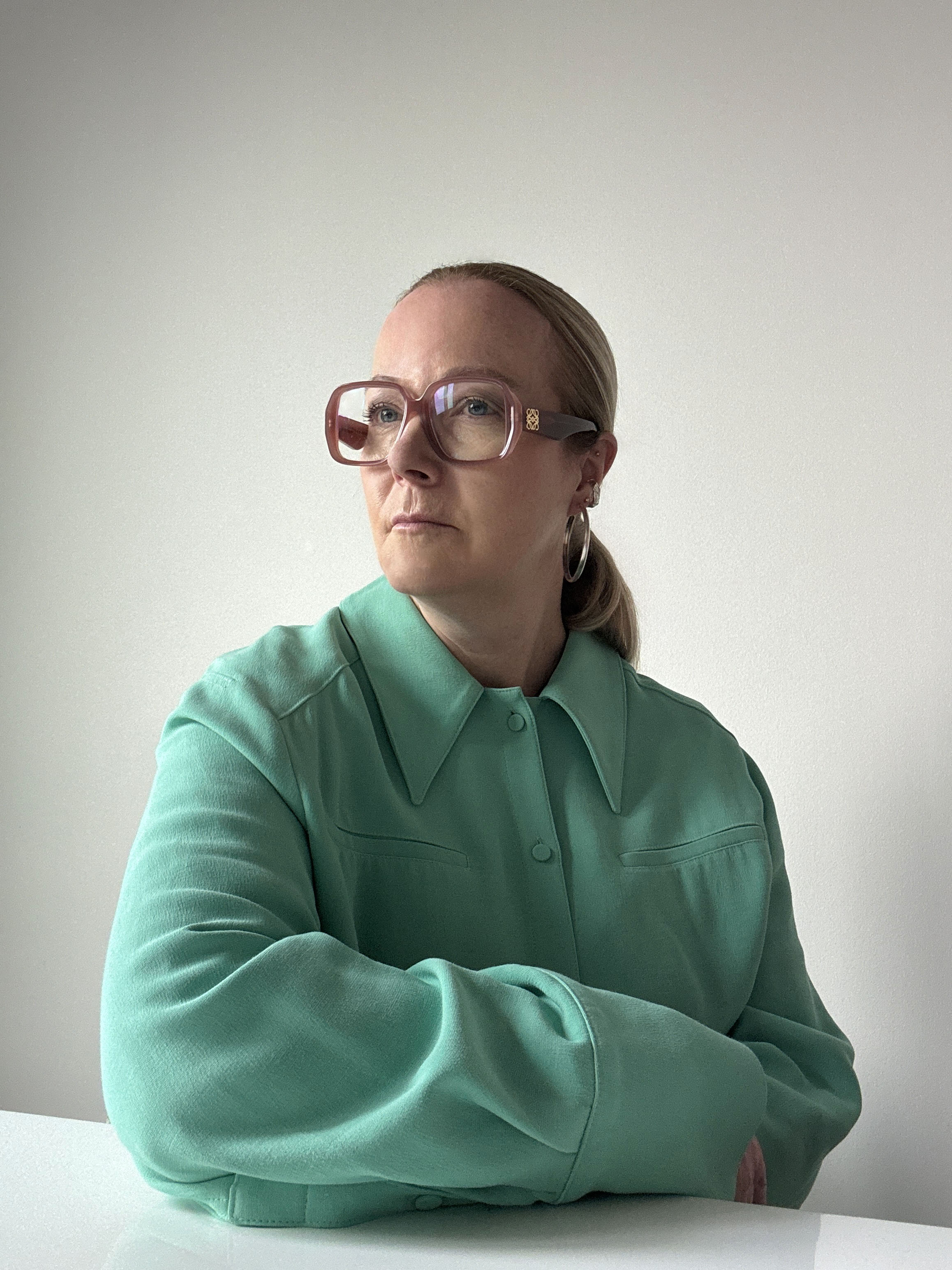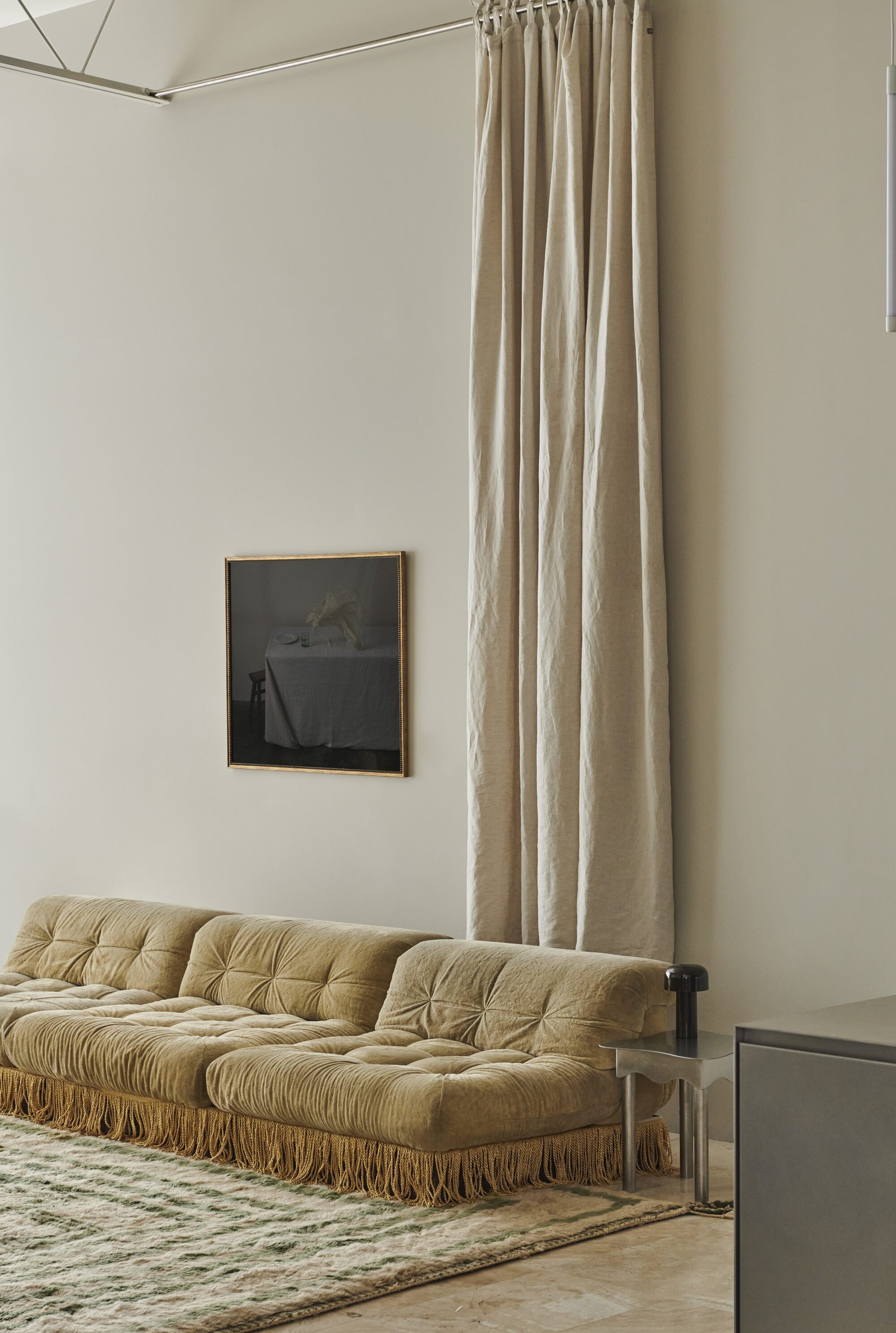What’s Next for Our Homes? The 14 Defining Interior Design Trends That Will Shape the Way We Live in 2026
As we enter the twilight of the year, our editor sets out his predictions for the ideas that will inspire the next best design projects


I get it if you're skeptical of interior design trends as a concept. The idea that you'd pour money into your home only for it to fall out of fashion the next moment doesn't sound appealing, undoubtedly.
However, not all trends are created equal, and for each throwaway idea that bubbles up on social media quickly and disappears just as fast, there are trends that speak not only to how our homes look, but how we want to live in them, and the things that are important to us, culturally, at any given time.
As the editor of Livingetc.com, I spend my days looking for these patterns, whether they're found in the projects interior designers send in to us, when visiting showrooms for inspiration, or even attending design weeks around the world. It's hard to ignore when a collective feeling starts to emerge, but sometimes you don't understand the relevance of a particular interior design trend until you see it in the wider context.
I update this article every year, inspired by the direction design is taking, and when I start to pull these seemingly disparate ideas together, a narrative starts to reveal itself. And 2026's is particularly interesting.
In the face of escalating technology causing us to question what is real and what is not, it's authenticity and craft that keep cropping up in the conversations I'm having. There's also a sense of frivolous theatricality emerging in design, inspired by a need for escapism, but also our desire for our homes to tell our own stories, rather than being sold a mass-produced dream.
Scrolling through the entries on this trend report, I also can't ignore the word 'contrast'. That eclecticism of the human spirit, the creative ability to bring together such disparate aesthetics to reinvent our homes, and the never-ending quest for design that surprises and delights are what the interiors of 2026, and beyond, will all prioritize.
1. The Mood: Theatrical Interiors

Livingetc's most recent editorial captures the theatrical nature of the mood in design right now.
In 2026, I can see the influence of the stage on interiors. Rooms are taking design cues from theater — they feel deliberately composed and dramatic, but also with an embedded sense of narrative.
The Livingetc newsletters are your inside source for what’s shaping interiors now - and what’s next. Discover trend forecasts, smart style ideas, and curated shopping inspiration that brings design to life. Subscribe today and stay ahead of the curve.
Some of this inspiration is literal. It's the moody color palettes, the exuberance of layered patterns and textures, and the statement decor that begs for attention. It's the flourish of an architectural drape and in the way we frame how we see from room to room inside our homes.
However, the wider recurring theme of the theatrical nature of interiors right now comes in its focus on storytelling. Whether it's the return of heritage as a prestige, introducing historied pieces into even the most modern schemes, or the cult of customization and using interiors to tell your personal history, the interiors that are resonating right now are the ones whose owners could spend hours talking about with their friends.
It’s about crafting a space that sparks imagination, evokes emotion, and makes everyday living feel just a little more cinematic.
2. The Color Trend: Red Orange

Red orange is neither one or the other, rather something that balances these warm colors.
It's hard to define the mood of the moment in just one color, despite what you see in every Color of the Year prediction. However, of the emerging color trends predicted by Livingetc's (and Pantone's, mind) color forecasting expert Jane Boddy, red orange is the one that's really resonated with me. It's not red or orange, it's red orange — that richer, more terracotta shade, but that somehow feels a little less earthy, and a little more fresh and modern.
But why is this color representative of what 2026 has in store? "Once associated with alarm and urgency, red is being reimagined for a new era, one defined by warmth, optimism, and human connection," Jane explains. "Blended with orange, it feels joyful yet sophisticated, carrying confidence without the drama." That's what I'm looking for in my year to come, so I'm on board with the nuance of this particular shade of red.
The project above, by interior designer Monika Michałowska, feels like the perfect encapsulation of the color, drawn from the work of a legendary Japanese artist. "Its shape and color are inspired by Hokusai," Monika says, "bringing warmth, energy, and a hint of fantasy to the apartment. The first glance into the interior feels almost dreamlike, which is exactly what I wanted."

A pivotal figure at the Pantone Colour Institute, Jane contributes to trend publications and serves as the European Creative Director for Pantone’s Interiors annual trends publication, Pantone View Home and Interiors. Her approach to forecasting color focuses on observing current events and cultural trends to understand how perceptions of color are evolving.
3. The Decorating Trend: Tonal Washes


In last year's interior design trends report, I talked about 'double drenching' as the evolution of color drenching, bringing in a slight contrast to the all-over paint finish we'd seen dominate previously. And things have continued to move in this direction.
Contrast in interior design is on its way back in, step by step. While double drenching was decidedly subtle in the contrast between colors, new ideas such as tonal washes and 'color capping' bring more distinctive separation between shades, but within the same color family. It's still soft on the eyes, but there's more of a sense of depth to schemes that use this idea, such as this Parisian apartment designed by architectural studio Volta.
"The color palette was selected based on the wood chosen for the kitchen, bench, and passage arch," explains Agathe Lavaud, founder of Volta, "a mahogany with terracotta hues. Painting the ceiling darker than the walls has several benefits: it enhances the existing cornices and moldings through contrast, and it also increases the perceived ceiling height by creating a visual opposition between the darker ceiling plane and the lighter walls," Agathe adds.
Whether next year I'll be reporting on color clashing taking over as the rising decorating trend, only time will tell.
4. The Era: Modern Medieval


It's a big swing to say the era inspiring 2026's interior design trends is medieval, but stay with me. I see it as the antithesis of the pastel-drenched digital-inspired aesthetic (which has become even more controversial in the age of AI) and a longing for history and story. As interior designer Christiane Lemieux says, this sort of style appeals to "our collective yearning for escapism and nostalgia, particularly in the face of a hyper-digitized and transient culture."
It's fair to say that I'm using medieval as a catchall here (bar, perhaps, the chainmail decor trend, as a prime example of the idea), but it's manifesting itself in the dark wood finishes we've seen return, the epic storytelling wall tapestries, and the eccentric antique furniture — rarity is the new luxury commodity.
The materials of the trend feel 'heavy', think stone, wrought iron, weighty draping fabrics, defining themselves against mass-produced, flatpack furniture, and a reaction against surfaces that feel slick, but shallow.
5. The Kitchen Trend: Old Meets New

A sleek slab kitchen door paired with an antique-style upper cabinet sets an intriguing tone for this color-drenched kitchen.
The 'modern heritage' kitchen trend is having a defining moment in design, combining new and old in a way that creates a new design distinct aesthetic. On the modern side, you'll see kitchen designs draw on the sleek and minimalist, or playful and innovative, while the heritage brings character and story. A kitchen like the above, by interior designer Natasha Strutovskaya, creates dynamism in the contrast between the two styles of cabinet.
Interior design studio Amor Immeuble has an interesting philosophy when it comes to combining old and new, skirting the need to feel fidelity to the heritage material over the modern. "We do not exclude the use of contemporary materials and techniques to rework 'old' materials. Heritage must evolve, be transformed without fear of anachronism, in order to remain alive and to be passed on. The question of formal balance comes afterward," the design studio explains.
It's less about deferring to heritage as the more important of the two, as it might feel obvious to do, but rather playing off the natural qualities of both.

6. The Bathroom Trend: Broken Check

Using different colors of standard tiles to make bold patterns is an emerging interior design trend.
Instead of patterned tiles, designers are turning to creative layouts using different colors to create a pattern on a larger scale. In previous years, this manifested in creative checkerboard tile, but this bathroom trend has shifted onto more complex broken checks, such as in the bathroom above, designed by French interior design studio Hauvette Madani.
"These bathroom tiles are directly inspired by Italy, and more specifically by the Hotel Pelicano on the Tuscan coast," Lucas Madani, co-founder of Hauvette Madani, tells me. "We wanted to reinterpret this Italian atmosphere with ceramic tiles made in the Beaujolais region. The geometric patterns and mosaic in shades of green bring a soft elegance to the room, while giving it a strong and refined character."
And there's the rub. This type of mixed-up checkerboard feels softer and more nuanced than your basic geometric patterns, giving a more sophisticated sense of scale than a one-to-one tile mix.

Samantha Hauvette and Lucas Madani are Paris-based interior architects and the co-founders of Hauvette Madani. The duo known for their refined, timeless approach to design, blending architectural rigor with creative ideas and colors, sculptural forms, and subtle historical references, often drawing inspiration from Art Deco and 1930s modernism.
7. The Furniture Trend: Lacquer


When I visited Milan Design Week earlier this year, there was a clear moment for lacquered finishes. These glossy, somewhat synthetic-looking finishes are a departure from the trend for matte surfaces we've seen in interiors for years, especially when it comes to natural materials such as stone and wood. I saw it used for the back of sofas, dining tables, shelves, side tables — pretty much anything you can imagine, and as a brilliant vehicle for color.
The way the material allows access to almost unlimited color is part of the appeal to Claire Sá, director of architecture studio De Rosee Sa, but lacquer is also being celebrated for its sheen. "It adds another texture to the room," Claire says, "And when you place lacquer alongside wood grain, or linen, or velvet, or seagrass, it creates contrast."
And we're back to that word again. "Contrast is what allows the materials to be appreciated," Claire says. "A room full of lacquer would be overwhelming, just as a room full of brown wooden furniture can feel heavy, but when used thoughtfully, lacquer becomes a highlight and brings the composition to life."
8. The Lighting Trend: Lava Lamps

This new supersized lava lamp by Sabine Marcelis shows how the retro idea has modern applications.
I'll be honest, we spend more time than necessary at Livingetc HQ talking about lava lamps, but it's not the lighting trend that I think everyone is going to truly consider for their homes. I had other options to talk about: namely, the use of interesting glass textures, and even the trend to more theatrical lighting integrated into the home, but there's something endlessly fascinating about the lava lamp.
It's at once nostalgic and futuristic; both a little 'brainrot' aesthetic fodder and the ultimate anti-doom scrolling decor to captivate your attention. Did you know that a wall of lava lamps is used to help encrypt the internet, as the lamps' true randomness is AI-proof?
The lava lamp is also transcending the 70s throwback/90s kids bedroom style for 2026, too. This new collaboration between iconic lava lamp brand Matmos and designer Sabine Marcelis invites you to look at the style in a different way, while the Livingetc team is equally entranced by New York-based designer-maker Shae Studio, who offers a more lo-fi aesthetic take on the lighting idea.

9. The Flooring Trend: Mosaics

Though it might look original, this mosaic floor is a modern interpretation commissioned for the project.
The rise of the heritage meets modern interior design trend can also be found in a flooring idea like the mosaic. These are the mosaic floors from history which, in an age of mass production and materials that look like something they're not, speak to our desire for craft and authenticity.
In the apartment, pictured, design studio Hauvette Madani plays on the contrast between modern and historic elements throughout, but nowhere more so than its floors. Though they look like they've been around for centuries, these mosaics are not original: they were custom-made for the occasion, in collaboration with mosaic artist Pierre Mesguich. "This dialogue between tradition and modernity is what fascinates us: the marble mosaic floors evoke classic Venetian craftsmanship, while the more contemporary lines and modern materials of the interior design create a subtle and elegant balance," Lucas Madani says.
However, more than that, I'd say that the mosaic floor appeals to that idea of storytelling we want to create in our homes. Mosaic floors allow for the use of intricate patterns, color, and texture, yes, but they can also create a narrative, like a piece of art on your floors. And that's before you get to ideas such as the 'Unswept Floor', a Roman artifact that had an unexpected revival in the collective consciousness this last year.
10. The Wallpaper Trend: Immersive Murals

A surreal mural of the Garden of Eden inspired the color scheme of this New Orleans home.
Full disclosure: murals have been the wallpaper trend of choice in the last three iterations of this interior design trends report — perhaps as the earliest portent of design creating immersive worlds at home. "In today's world situation, people are seeking their own beautiful cocoons to live (read: escape) in," says New Orleans-based designer Nomita Joshi-Gupta, founder of Nomita Joshi Interior Design, "and there is even a trend to these fantasy-type murals and wallpapers that make you feel like you're in another, more uplifting, world."
Called The Garden of Eden, by US wallpaper brand Aux Abris, it features fantastical Art Deco elements like flowers, greenery, and even the snake from its namesake story. In this home, the colors in the mural not only informed the colors in the room but also set the tone for the whole house. "We even custom-designed the pillows on the sofa to mimic the shapes of the flowers and stems in the mural to make them look as if they fell out of it," Nomita says.
11. The Big Idea: Hyper-Customization

The story stool, by Uncommon Ancestor, starts from £2,700.
I've been asking myself the same question again and again over the course of the last year: why are we drawing on things? It's the idea of hyper-customization as an interior design trend. It's not just that you're commissioning a piece of furniture to order, but that this piece of furniture wouldn't make sense for anyone else to own because it tells your story, specifically.
I've seen the idea play out in everything from embroidered sofas to bespoke Delft tiles depicting personal histories, and it's something that designer Kara Douwma, founder of Uncommon Ancestors, captures in her work, embroidering iconography onto footstools for conversation-starting accent furniture. "For me, customization is the ultimate form of self-expression," Kara tells me. "It gives people the opportunity to create a unique piece of furniture that reflects their own ideas and creativity."


These motifs can be everything from a favorite flower to something more obscure, but the aesthetic lends itself to the eclecticism in the extreme. In Kara's work, a melting ice lolly might sit next to a plate of fish or some tennis balls. "I believe that the stories come first and all the objects will look beautiful once embroidered," Kara says. "I’m currently working on a really fun piece for a client in California that’s a mixture of her favorite things with hidden Easter eggs stitched within the objects," Kara tells me. "I love making designs super personal. A house number or favorite book cover — the more I get to know the client, the more creative we can be."
It's, perhaps, the most overt act of storytelling within our list of interior design trends for 2026, but it also draws on other recurring themes — including both craft and historical references. "I’m really influenced by our rich history of symbolism and iconography," Kara says. "How the Renaissance artists used pomegranates for rebirth, whilst Vanitas depicted candles for mortality. Rococo’s shells evoked romance, while the Symbolists moved away from nature to embrace mythology. I wanted to add my own more whimsical take on this."
12. The Textile Trend: Leather and Hide


I can't quite find a way to prove it, but I get the sense that squeamishness around using animal products in design seems to have lifted — for better or worse, depending on your position. And, it's not just that, but traditional faux alternatives have been more widely ostracized for being poor imitators and made from non-eco-friendly plastics.
For Austin Carrier and Alex Mutter-Rottmayer, founders of design studio and shop Hommeboys, the versatility and authenticity are part of the selling point of these materials. "There are seemingly endless options with leathers and hides in terms of texture and color," the designers tell me. "All of our designs are rooted in materiality, and working with leathers and hair-on-hide allows us to add texture and dimension to a room, while maintaining clean lines often lost with softer upholstery fabrics."
That's not to say that alternatives are off the table, however, and we're innovating some vegan-friendly, sustainable materials that offer those same qualities. "We don't work with faux versions of leather in the traditional sense, but we are super interested in and inspired by true innovation within the material, like the work being done by Mycoworks with Reishi mushroom leather," Austin and Alex explain. "From both an aesthetic and sustainability perspective, we always lean toward organic materials within our designs, so it's exciting to see truly viable options like these start to come to market."
13. The Sofa Trend: Fringe

Fringing can make an unexpected contrast in a more minimalist setting for 2026.
In the spirit of theatricality, sofas with a final flourish of passementerie are the designs capturing the mood of 2026. It's a design style often seen in more traditional settings or spaces channeling the revelrous 70s aesthetic, but in 2026, it's an addition that can be more of a contrast, attached to more minimalist, more casual sofa designs.
For the Australian designer Amelda Wilde, restraint can mix with romance for this sofa trend. “Fringing allows surprise, novelty, and experimentation, and this period detailing can be enchanting when used in subtle doses,” she says. “It’s all about contrasting texture, volume, and references, and being less uniform in your design choices.”
14. The Metallic Trend: Sanded Stainless

Flawk Studio's own stainless steel finish reinvents the trend.
Stainless steel and chrome decor are undoubtedly some of the biggest interior design trends of 2025, however, we're seeing a new evolution of this material start to break through, and it's something I'm expecting to be a defining finish next year.
At London Design Festival this year, I got hands-on with the work of Six Dots Design — a modern design brand I'd seen all across my For You page, known for its textured steel furniture and accessories. What I discovered, when I could finally touch these pieces, is that it's as important to be tactile with this material as it is to value it for its striking good looks. Each application had a different sensation, and it varied greatly from what you expect in touching standard stainless steel.
Flawk Studio is another design studio innovating with the material. "For me, I love the materiality of stainless steel; very durable, water resistant, easily accessible, and reasonably affordable. Incorporating both stainless steel and wood tones harmonizes a space with a contemporary feel," Ashley Lab, director of Flawk Studio, tells me. Flawk's take on stainless steel uses a directional brushed finish that makes the metal much more textured, rather than sleek and shiny.
It's a design concept, but also a practical idea, too. "We've sampled various coatings to come to one that effortlessly prevents fingerprints, making the material much more viable for interior design, especially for high-touch zones like stainless steel kitchens," Ashley explains.
On reflection, as we move into 2026, interior design trends feel more personal and more expressive. More than just shallow aesthetics, these trends reflect individuality and lived experience, about authenticity and our humanity.
The new luxury isn’t about excess; it’s about intention. Whether through the quiet confidence of natural materials, the warmth of heritage influences, or the play of bold color and form, this year’s trends speak to how we want to live now: with comfort, creativity, and a sense of connection.

Hugh is Livingetc.com’s editor. With 8 years in the interiors industry under his belt, he has the nose for what people want to know about re-decorating their homes. He prides himself as an expert trend forecaster, visiting design fairs, showrooms and keeping an eye out for emerging designers to hone his eye. He joined Livingetc back in 2022 as a content editor, as a long-time reader of the print magazine, before becoming its online editor. Hugh has previously spent time as an editor for a kitchen and bathroom magazine, and has written for “hands-on” home brands such as Homebuilding & Renovating and Grand Designs magazine, so his knowledge of what it takes to create a home goes beyond the surface, too. Though not a trained interior designer, Hugh has cut his design teeth by managing several major interior design projects to date, each for private clients. He's also a keen DIYer — he's done everything from laying his own patio and building an integrated cooker hood from scratch, to undertaking plenty of creative IKEA hacks to help achieve the luxurious look he loves in design, when his budget doesn't always stretch that far.





